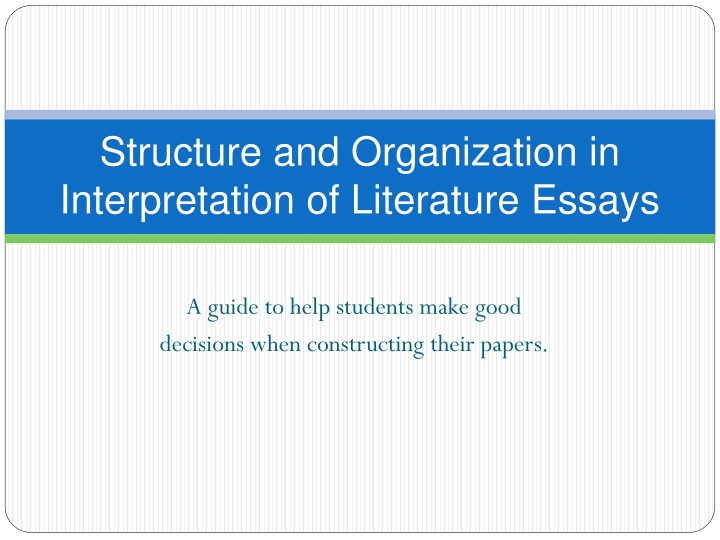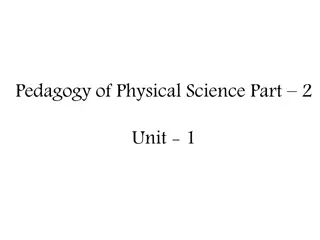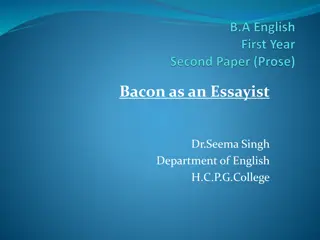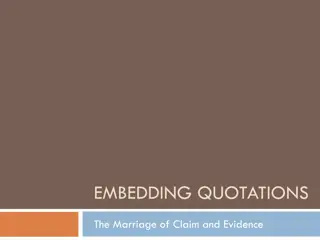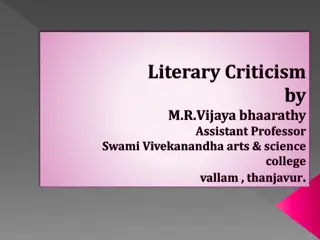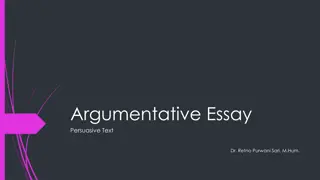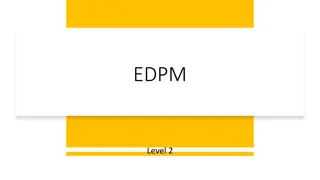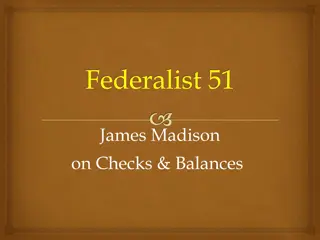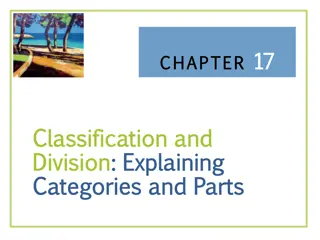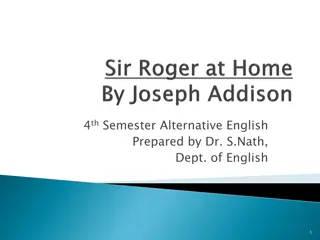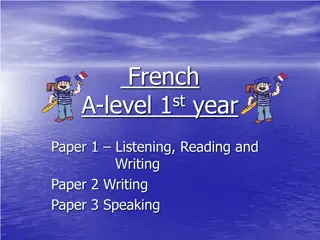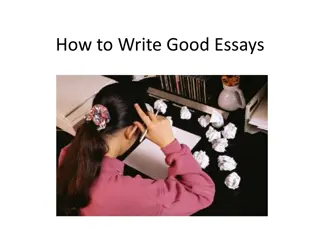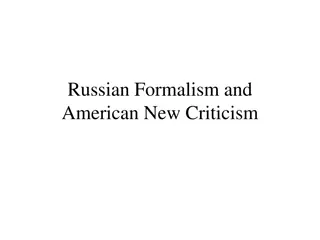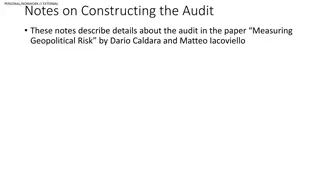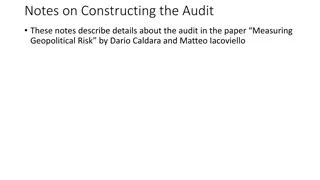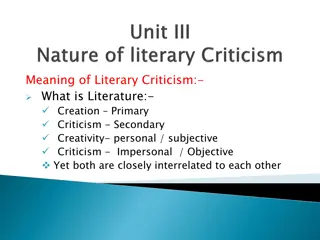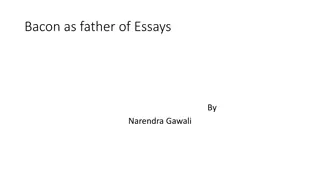Constructing Effective Paper Structure in Literary Essays
When crafting a literary essay, a well-organized structure is crucial to guide readers through your arguments smoothly. Learn about paragraph writing, fractal structures, and the importance of clear progression in presenting evidence to enhance your paper's impact.
Download Presentation

Please find below an Image/Link to download the presentation.
The content on the website is provided AS IS for your information and personal use only. It may not be sold, licensed, or shared on other websites without obtaining consent from the author.If you encounter any issues during the download, it is possible that the publisher has removed the file from their server.
You are allowed to download the files provided on this website for personal or commercial use, subject to the condition that they are used lawfully. All files are the property of their respective owners.
The content on the website is provided AS IS for your information and personal use only. It may not be sold, licensed, or shared on other websites without obtaining consent from the author.
E N D
Presentation Transcript
Structure and Organization in Interpretation of Literature Essays A guide to help students make good decisions when constructing their papers.
Paper Structure, Defined The central thing to remember with paper structure is that you want to help your readers navigate your paper with ease. Remember, readers are lazy and will be frustrated if they have to do work to figure out your argument. With this in mind, the structure becomes the choices you make about the order in which the evidence for your claims is presented: Effective structures help eliminate reader confusion & create meaning. Ineffective structures make the argument hard to get, creating frustration. The goal with a structure is to have each of your paragraphs working together to convince your readers.
Paragraphs: Your Basic Unit In terms of writing, sentences are your primary units however, when thinking of structure, paragraphs are the central units to work with. A paragraph can be of almost any length, but should be at least 3 sentences long--those would have to be VERY good to support such a short paragraph. The upper-end length of the paragraph is determined by how long you work with a single idea or concept NOT a single topic. For instance, you may have several paragraphs supporting a single larger topic you wish to consider, and doing so actually strengthens your overall argument. The goal of each paragraph is to work through a single idea for your readers, so they can see how to read the text the way you want them to. If you want to talk about a character, and have two different things to say about them, use two different paragraphs.
Structures are Fractal You all know about the 5-Paragraph Essay, I am sure: intro, idea one, idea two, idea three, conclusion. We are moving beyond this basic structure, but it remains useful to consider. The general concept with the 5-Paragraph Essay is strong: claim/argument introduced, topics supporting or expanding the claim presented, and a concluding section ties the argument together. Here we want to use that and move forward, but sometimes our ideas are more complex and require additional explanation to really make work hence more paragraphs, micro introductions, etc. This system is infinitely flexible and expandable, and much like a fractal, can grow larger depending on how close you get to it see an example on the board.
Fractal Structures, continued The central idea behind the fractal system is that each paragraph you write will basically be a micro-argument of its own, supporting the main argument of the text. When you quote a part of the text and explain how it supports your main argument, you are claiming (arguing) that your evidence supports your main argument. Because of this nested argument, each paragraph itself could be expanded, with each support you provide explained in more detail. Basically, no matter what your argument might be, you can always expand it by focusing in on some part of your supporting evidence. This means that your choices about structure end up being determined by your level of focus and not necessarily by lacking things to say. There are always places where you can investigate more fully or expand your thoughts, and so the basic 5 paragraphs can quickly become eight just by splitting each of your basic supporting paragraphs into two sub-supports each.
An Example Fractal Fractals are geometric shapes that can be zoomed-in upon to see that their complexity repeats, often in the same pattern as the original. They exist in mathematics but also in natural forms, such as romanesco broccoli.
How to Organize Now that you are aware of the importance of structure, the next step is to work directly on your organization there are a couple of good ways of going about this. The first is a full-blown outline, which can be a beautiful way to diagram your paper on a minute level. This is time-consuming, but worth it if you are comfortable with outlines and feel that working directly with the text is useful for you. The other major way to go about this is with a simple topic sentence organization. Make a topic sentence for each paragraph and treat those as your units to play with, re-organizing based on what topics you think should follow after each other.
Providing Directions: Transitions As you build your structure around the larger points you wish to make, it s important to help your readers navigate. If each paragraph is a relatively coherent unit, then there has to be some logic to moving between them. The primary method of doing this is the construction and positioning of transitional statements. Making these useful and functional requires more thought than simply using a basic transitional device or word. Don t use words like next or additionally or after that these indicate a lack of attention or care. Of course what you say is next or additional to what you said before.
Ideas for Transitions The best advice I can give you is to carefully consider why you are done with the previous topic and are moving on to a new one. End your section conclusively, and when you open your next paragraph, acknowledge where you were and what the new ideas are linking them in some way. The goal here is not to be perfect, but to give your reader the necessary information to help them move forward. Let s look at an example.
Example Transition In our example paper, the paragraphs will shift from the topic of Love Despite Power Difference to the idea of Power as a Weakener what can bridge these ideas? Let s look at how the first paragraph literally ends, and then see about how to connect those final thoughts to the beginning of the next one. Previous Paragraph Ends: and from this we can see the love that Offred bore Nick, despite the differences in power between them. Transition at Beginning of New Paragraph: Though in this case power may not harm the relationship, it can still weaken those who possess it.
Final Comments on Structure Always consider how your reader is experiencing your argument. Keep in mind transitions within larger sections as well as transitions between them. Remember that there is no perfect organization or structure, but that you can maximize the effects of whatever arrangement of elements you choose.
